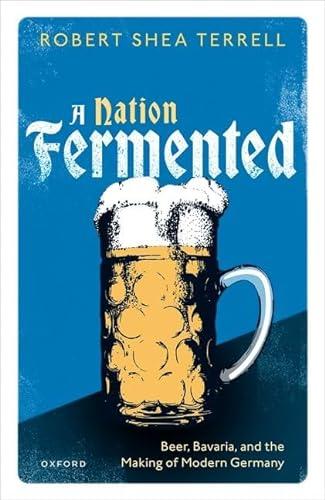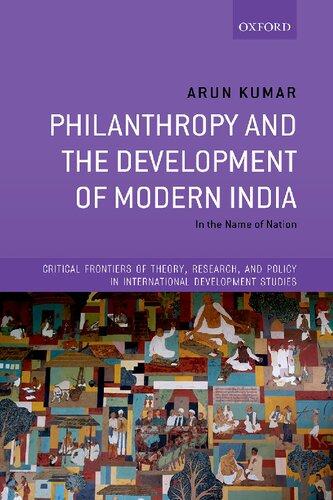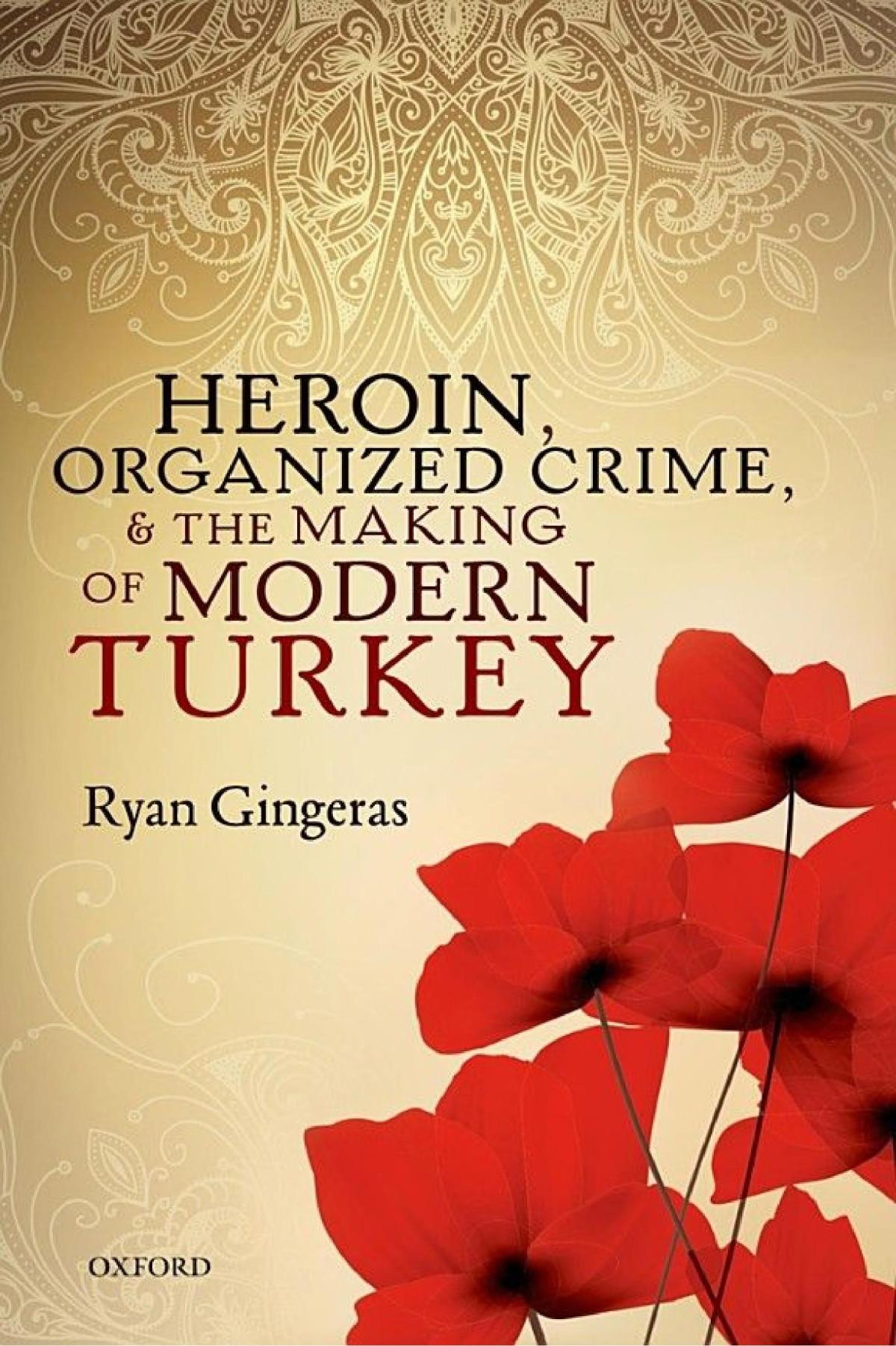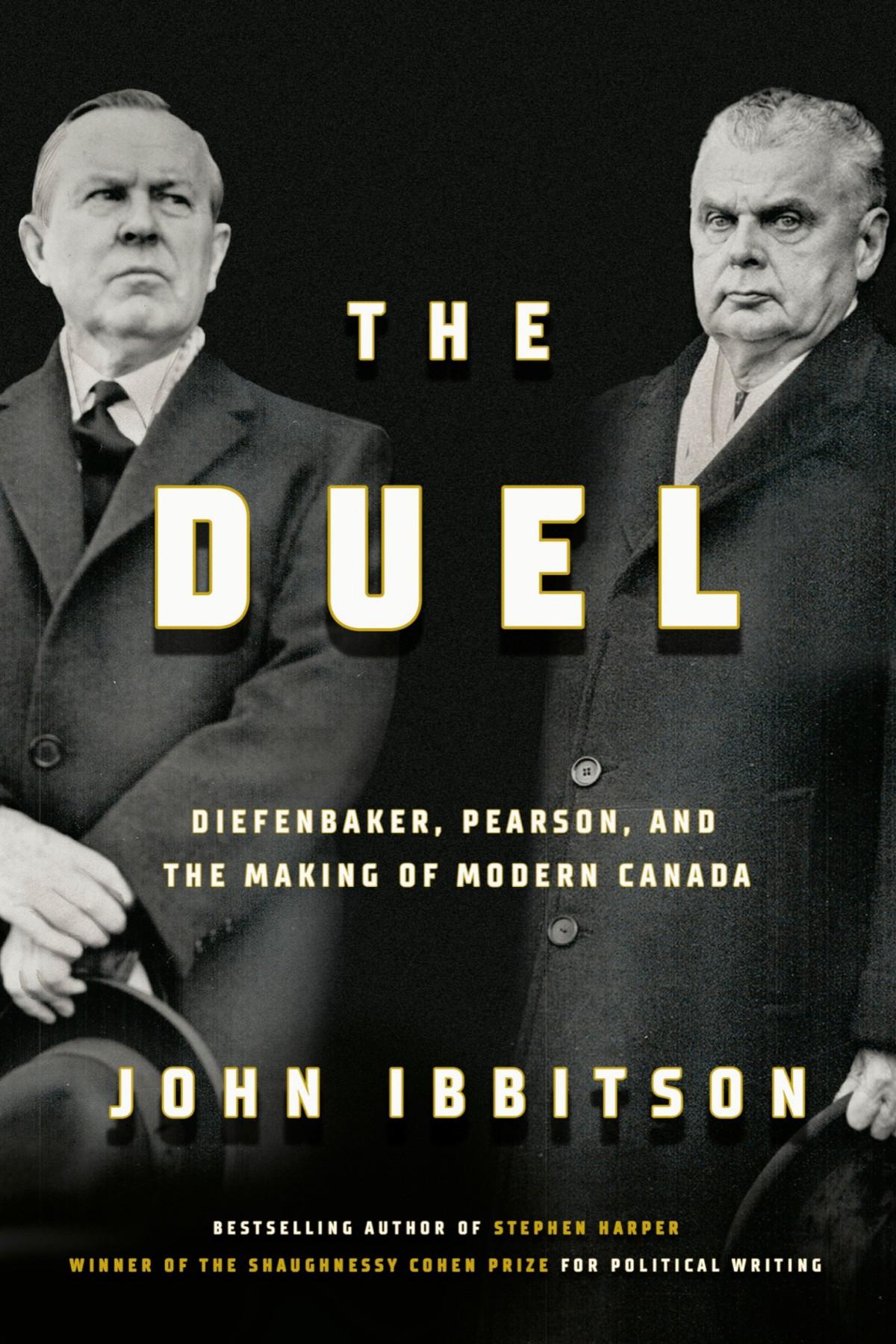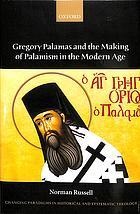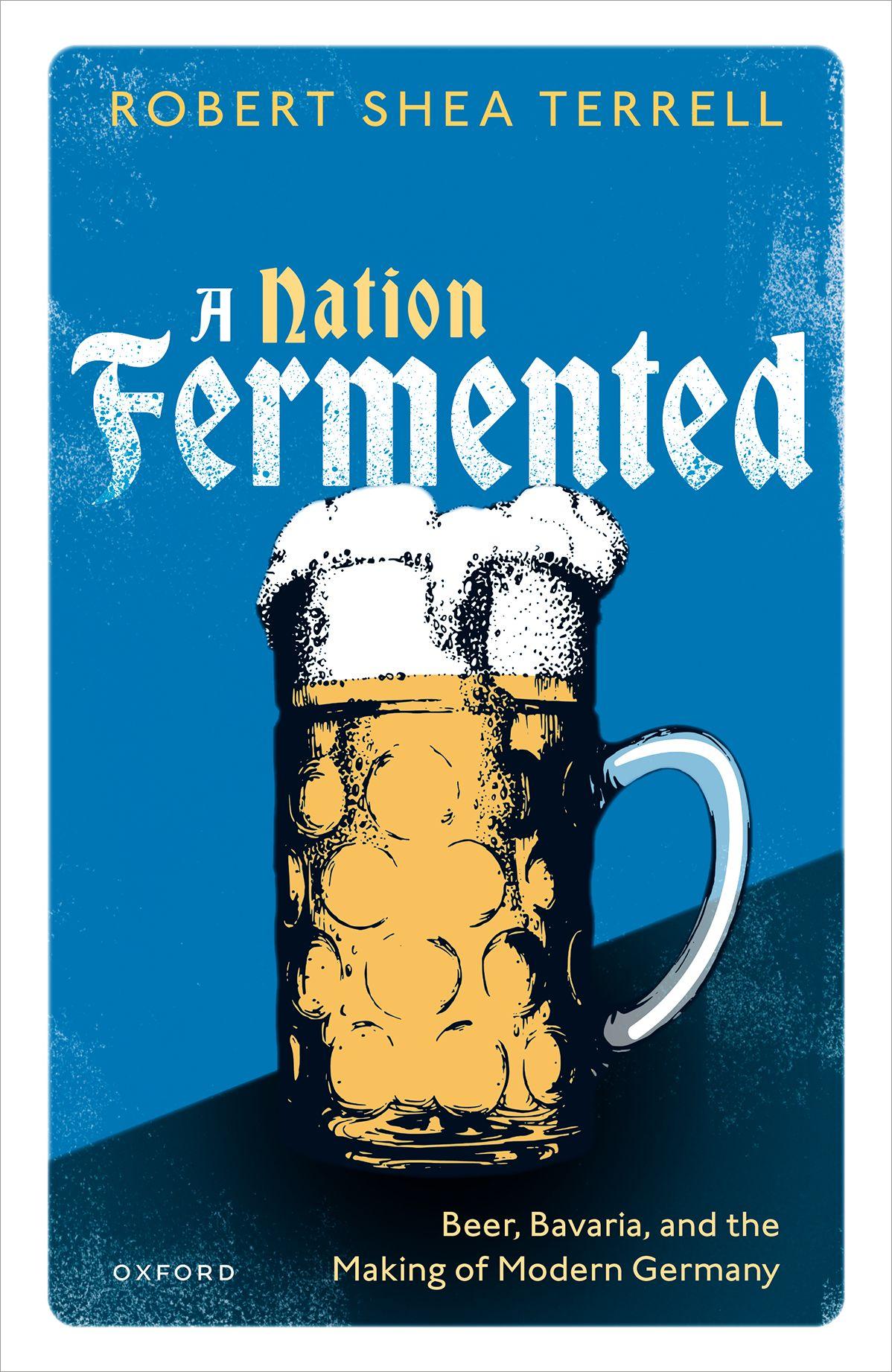A Nation Fermented
Beer, Bavaria, and the Making of Modern Germany
ROBERT SHEA TERRELL
Great Clarendon Street, Oxford, OX2 6DP, United Kingdom
Oxford University Press is a department of the University of Oxford. It furthers the University’s objective of excellence in research, scholarship, and education by publishing worldwide. Oxford is a registered trade mark of Oxford University Press in the UK and in certain other countries
© Robert Shea Terrell 2024
The moral rights of the author have been asserted
All rights reserved. No part of this publication may be reproduced, stored in a retrieval system, or transmitted, in any form or by any means, without the prior permission in writing of Oxford University Press, or as expressly permitted by law, by licence or under terms agreed with the appropriate reprographics rights organization. Enquiries concerning reproduction outside the scope of the above should be sent to the Rights Department, Oxford University Press, at the address above
You must not circulate this work in any other form and you must impose this same condition on any acquirer
Published in the United States of America by Oxford University Press 198 Madison Avenue, New York, NY 10016, United States of America
British Library Cataloguing in Publication Data Data available
Library of Congress Control Number: 2023938485
ISBN 978–0–19–888183–4
DOI: 10.1093/oso/9780198881834.001.0001
Printed and bound in the UK by Clays Ltd, Elcograf S.p.A.
Links to third party websites are provided by Oxford in good faith and for information only. Oxford disclaims any responsibility for the materials contained in any third party website referenced in this work.
1. Integration and Its Discontents: Lager, Tax, and Temperance, c. 1900 to the 1930s 17
2. The People’s Drink in the Racial State: Debating the Interests of the Volk
3. Liquid Bread: The New Politics of Bavaria from the postwar Occupation to the Federal Republic 70
4. Brewing up a New Old Germany: Production, Consumption, and Social Order in the Miracle Years 95
5. Making a National Icon: A Political Economy of the Reinheitsgebot, 1953–1975
6. The Munich Effect: Löwenbräu, Bavarian Beer, and the Global Imaginary 143
7. Gone Flat?: Reconfigurations from the Recession to the Wende
Acknowledgements
The journey that culminated in this book started in late 2008 as I was reconsidering my life choices. A couple years earlier, I had dragged myself over the graduation finish line at North Carolina State University and had since been following my love of food, working as a chef in Raleigh’s upandcoming restaurant scene. By the end of that summer, I was licking my wounds after opening a restaurant that might have bested a global recession if not for intense differences between the creatives and the capital. In that moment of reconsideration, I leapt from the proverbial frying pan of restaurant work into the fire of academia. The following year I moved to Philadelphia to begin a terminal Master’s program at Villanova University, where I found the intellectual stimulation and passion that has, to date, fueled the next decade and a half of my professional life. Among the many debts I feel to that program, Paul Steege has been a consistent and generous mentor who always makes time to read work, grab a meal, or listen as unrefined ideas pour out of my mouth. From there, I crossed the country, beginning my PhD at the University of California San Diego, where Frank Biess offered precisely the mentorship I needed—expert guidance, humor, and a wonderful balance of rigor and flexibility. Frank and Paul have been generous advocates, and each in their way is a model for the type of scholar I hope to be. From Raleigh to Philadelphia to San Diego, Anthony La Vopa, Martha Lampland, Thomas Ort, Patrick Patterson, Jeremy Prestholdt, and Pamela Radcliff have each shaped the scholar and teacher that I am. They all have my thanks.
Formal mentors hold a special place in book acknowledgments—and in my heart—but many other colleagues and friends have shaped the evolution of this book, and of its author. John Gillespie and Julie Sneeringer each generously read the entirety of the manuscript, bringing their respective expertise and offering unique feedback. A lengthy list of other people has in one way or another influenced this book through conference comments and hallway conversations. Special thanks for their insights and support go to Greg Eghigian, Melissa Feinberg, Neil Gregor, Paul Hanebrink, Jeff Johnson, Rita Krueger, Jay Lockenour, Uwe Spiekermann, and Ulrike Weckel. Formative exchanges have also come at a bar, café, Biergarten, or Döner shop. In such settings, Julie Ault, Ian Beacock, Alissa Belotti, Jeremy Best, Adam Blackler, Mikkel Dack, Chris Fojtik, Patrick Hege, Andrew Kloiber, Melissa Kravetz, Jamie McSpadden, Alex Ruble, Lauren Stokes, and Teresa Walch have made life as a German historian a pleasure. Many people named in this paragraph have read or talked through sections of this book. But thanks are due especially to the members of the Philadelphia Area Modern
Germany Workshop for their thoughtful comments on an earlier version of Chapter 1. Similar thanks are also due to Alex Ruble for helping make Chapter 4 less of a thorn in my side. Other friends made along the way have proven a source of joy and fruitful distraction. Particularly appreciated for their joyful and distractive qualities over the years are Patrick Adamiak, Andrew and Lauren Aker, Matt Davidson, Katie Featherstone, DJ Guba, Bruce Hardy, Dave Henderson, Michael Keys, Annka Liepold, Joel Palhegyi, Jefferson Pooley, Norman Porticella, Urszula Pruchniewska, Dipankar Rai, Kelly Rembolt, Justin Rockwell, Scott Schabot, Alexa Schmitz, Katherine Sender, Nicholas Shapiro, Ben Smuin, Henrik Stephan, Meghnaa Tallapragada, Daniel and Dawn Taylor, Aaron Vaughn, and Tito Wright.
The research and writing of this book benefitted from numerous institutions and professional associates. The research for this project was funded by the J. William Fulbright Program, the German Historical Institute in Washington, DC, the German Academic Exchange Service (DAAD), and the Central European History Society. I owe these institutions many thanks for putting their faith (and money) into this project. The DAAD funded a stay at the Rachel Carson Center for Environment and Society, where Christof Mauch was far more welcoming and generous with his time and position than I could have ever hoped. In the archives, Laura Burgassi (HEAU), Katharina Köhn (ACSP), Eva Moser (BWA), and Susanne Millet and Johann Pörnbacher (BayHStA) were all particularly encouraging as I bounced around in German and European collections and worked to finish the manuscript. Thanks are also due to the Bayerischer Brauerbund and the Deutscher BrauerBund for their support. Content in Chapters 5 and 6, respectively, appeared in the journal Contemporary European History and the Routledge volume Alcohol Flows Across Cultures, edited by Waltraud Ernst. Thanks to Caroline Jennings, who lent her keen editing eye to several of the chapters. At Oxford University Press, Matthew Cotton, Imogene Haslam, and Stephanie Ireland were tremendously supportive and efficient in the production of this book. The anonymous reviewers Stephanie and Matthew organized have my deepest thanks for their thoughts and contributions. In Munich, Clay Mock was a lifesaver, hunting down printable versions of many of the images in the eleventh hour.
Since 2018, I have had the pleasure of working in a wonderful department and college at Syracuse University. My appreciation for the administrative wizardry of Christina Cleason and Faye Morse knows no bounds. Truly, little is likely to get done without them. Timur Hammond in the geography department has graciously read my work, organized crucial writing groups, and proven to be a supportive and positive voice in moments of selfdoubt. The entire history department has my appreciation, but Susan Branson, Albrecht Diem, Samantha Herrick, Amy Kallander, Norman Kutcher, Tessa Murphy, and Junko Takeda have
been particularly welcoming and supportive as I learned the institution, built a life in central New York, and worked toward completing this book.
Finally, I am tremendously grateful for the support of my family. My siblings, their spouses, and their children—Edward, Emily, George, Louisa, and Hugh Terrell, and Jane, Thad, Henry, and William Paul—have been a source energy and reprieve. My parents, Bob and Maria Terrell, have been unflinchingly supportive and have bravely endeavored to converse even when I was lost in the woods. My partner, Brooke Erin Duffy, and our daughter, Harlow Shea Terrell, have brought joy amidst the grinding moments of writing and finishing a book. Brooke has played every role imaginable, from critic and mealmaker to muchneeded distractor. Her keen editing eye and “wordsmithery” helped punch up the language and make the text approachable to nonspecialists. Her silliness and humor provide welcome disruptions, and her love remains an anchor. Harlow has proven to be incredibly strong, generous, funny, and thoughtful. I cannot wait to continue watching her become who she is and wants to be. This book is dedicated to my parents, my partner, and our daughter.
Timeline
1516 Wittelsbach dynasty limits beer production to malted barley, hops, and water
1553 Wittelsbach dynasty restricts the production of beer in the summer (effectively banning the production of ales) in Bavaria
16th to 18th Persistence of numerous local cultures of production and consumption centuries
Wittelsbach wheat beer monopoly in Bavaria
Early emergence of technical brewing literature in Bavaria
1842 Invention of Pilsner in Pilsen/Plzeň, Habsburg Empire
1871 German unification
Bavaria, Baden, and Württemberg retain brewing standards and tax revenues through Reserve Rights (Reservatrechte)
1872 Founding of the North German Beer Tax Community (norddeutsche Brausteuergemeinschaft)
1894 Invention of Helles in Munich
1902 Saccharine ban prohibits the use of artificial sweeteners
1906 Yeast added to the list of permissible ingredients
National law (effectively in northern Germany) adopts fouringredient list (malted barley, hops, water, yeast) for bottomfermented beer; topfermented beer can still be brewed with malts from other grains and specified sugar sources
Three southern states exercise Reserve Rights to unify around Bavarian production standards: fouringredient list in all types of beer
1919 Southern states join the Beer Tax Community (Biersteuergemeinschaft) on the condition of retaining stricter production standards
Beer tax integrated for equalization via the Reich Finance Ministry
1930 Bavarian People’s Party (BVP) fragments, in large part over the beer tax
1931 German Brewers Association votes against national community advertising
1933 Adolf Hitler appointed Chancellor
1938 Reich Food Estate (Reichsnährstand) proposes brewing with the addition of sugar
1945–1948
Brewing bans (Brauverbote) variously in effect throughout occupied Germany
1949 West German Basic Law (Grundgesetz) Article 106 grants beer tax revenue to the federal states
1950–1952
Beer Tax Law (Biersteuergesetz) lowers tax rates (1950) and perpetuates
1906 standards of Lager/Ale production (1952)
1951 Founding of the Bavarian and West German community advertising organizations
1952–1956 Bavarian exporters hire patent lawyers for trademark disputes
1954 Beer production surpasses prewar levels nationwide in West Germany Distribution Ban (Vertriebsverbot) against “sweet beer” (Süßbier) in Bavaria
1960 US Trademark on “Genuine Bavarian Beer” granted to the Bavarian Brewers Association
1962 Beer Transport Law (Gesetz über den Verkehr mit Bier) passes in Bavarian Landtag
1964 Bavarian beer exports see threefold increase over 1954
1964–1965 New York World’s Fair
1968 Beer becomes the single most consumed beverage in the Federal Republic
1969 Bavarian beer exports see fivefold increase over 1954
1970 European Economic Community (EEC) Directive to harmonize brewing standards
1974 Löwenbräu outsources production in the UK and US
1975 EEC Directive withdrawn
1987 European Court of Justice repeals the Reinheitsgebot as a nontariff trade barrier
1989–1990 Fall of the Berlin Wall and national reunification
1991 Remaining East German breweries conform to the Reinheitsgebot
1995 European Commission recognizes “German Beer” as a traditional product Inaugural “Day of German Beer” celebration
List of Illustrations
1.1 Emil Kneiß, “German Christmas (Stresemann with bandaged hand)” 12/23/1928, reproduced with the permission of Vanessa Wittmann, image thanks to Hermann Kurz and http://www.derbuzimaler.de/ 29
1.2 Karl Arnold, “Bürger Masoch” Simplicissimus Vol. 34, No. 2 (Apr. 8, 1929). 31
1.3 “If the Beer Tax were lowered .” BayHStA Bayerischer Brauerbund 422. Reproduced courtesy of the Bavarian Brewers Association. 38
2.1 “Beer has been the national drink of the Germans since primitive Germanic times!” Der Angriff Mar. 4, 1933. 48
2.2 “Two Men – Two Worldviews” Der SA-Mann May 14, 1938. 53
3.1 “Beer mitigates the drink emergency,” BayHStA Bayer. Brauerbund 423. Reproduced courtesy of the Bavarian Brewers Association. 86
4.1 Heinz Fehling, “Blue Medallion,” reproduced courtesy of the German Brewers Association. 100
4.2 Max Bletschacher, “In Bavaria you drink beer,” Bayerischer Brauerbund e.V., Geschäftsbericht 1951/52 und 1952/53, insert. Reproduced courtesy of the Bavarian Brewers Association. 102
4.3 Thomas Abeking, “Beer makes thirst enjoyable,” reproduced courtesy of the German Brewers Association. 109
4.4 Heinz Fehling, “Cool Beer,” reproduced courtesy of the German Brewers Association. 113
4.5 Thomas Abeking, “Beer fosters sociability,” reproduced courtesy of the German Brewers Association. 115
4.6 Thomas Abeking, “Wanderer in the desert,” reproduced courtesy of the German Brewers Association. 118
5.1 “ArB ballot box in Bad Neustadt a.d. Saale.” Bayerischer Brauerbund e.V., Geschäftsbericht 1970/71, insert. Reproduced courtesy of the Bavarian Brewers Association. 137
5.2 “Federal Minister Käthe Strobel tests pure Bavarian beer at a televised event in Summer 1969.” Bayerischer Brauerbund e.V. Geschäftsbericht 1968/69–1969/70. Reproduced courtesy of the Bavarian Brewers Association. 139
5.3 “Germany’s source of Purity: Beer,” reproduced courtesy of the German Brewers Association. 140
8.1 Peter Leger, “Which image of Germany should we use today?” EG-Magazin: Politik-Wirtschaft-Kultur no. 7/8 (July, 1987), p. 7. Reproduced courtesy of the Haus der Geschichte der Bundesrepublik Deutschland. 190
Terr itory lost in 1919
Nor th Sea
Inter national Bdy State Bdy 2000 East/West Bdy 1945-90 Provincial Bdy
BAVARIA
Swa bia Stuttgart
State name Province name City name
Baltic Sea
SCHLESWIGHOLSTEIN
MECKLENBURGVORPOMMERN
Territory lost in 1919
GERMANY
LOWER SAXONY
Dortmund
Düsseldorf
Cologne
NORTH RHINEWESTPHALIA HESSE
WEST
RHINELANDPALATINATE
Erfurt Nuremberg Würzburg
Franconia
Terr itory lost in 1919
Ansbach
Stuttgart
050100 150 miles
050100 150 km
Swabia
Munich
East West
Terr itory lost in 1945/49
Leipzig Dresden BERLIN
Ol dB avar ia
Kingdom/Free People’s State of Württemberg Kingdom/Free State of Bavaria Grand Duchy/Republic of Baden
Map Territorial changes and the German south in the 20th century.
Introduction
In a smoke-filled, working-class bar in Depression-era Berlin, a waiter delivers two glasses of beer to a table, adds the drinks to the coaster tallies, and moves on. One of the men at the table, Herr Völker, ponders his drink briefly before turning to his fellow communist, Herr Stoppel. “If I put a British beer here,” he begins with an unmistakable Berlin accent, “and here a hearty Molle Helles, which one would you drink?” Stoppel answers as expected: he chuckles and declares he would prefer to drink the local Helles, “of course.” Völker proceeds with a series of follow-ups centering on where the Helles is from: It is brewed in Berlin. But where is Berlin? On the Spree River. But where is the Spree? In Germany. “That’s right,” declares Völker. “In Germany. In our Germany. Think that over.” Völker’s line of questioning echoes an earlier conversation he had with the leader of his son’s Hitler Youth group. In that instance, Völker was led through similar questions, again building toward the importance of the German nation as the foremost frame of reference. As he prods Stoppel along, Völker links local beer to his national awakening, questioning his communist convictions in favor of German nationalism and, presumably, National Socialism.
This scene comes from Hitlerjunge Quex, the first major Nazi propaganda film, which premiered about eight months after Adolf Hitler’s appointment as Chancellor. The bar conversation and the film more broadly reflect the intense battle between the Nazis and their opponents on the left, most notably the communists. In this working-class bar, beer provides an opportunity for the characters and, presumably, the audience, to consider the national stakes of the mundane. The Helles creates cultural distance from Britain, and its origins in Berlin lead the characters to think of the city not as an industrial, workers’ city on the Spree—a hub of international communism—but rather as part of a communal and national whole: “our Germany.” From the perspective of the 21st century, it seems selfevident that beer from Berlin is German beer and that drinking it has something to do with being German. But if that were simply the case, Herr Stoppel should not need three chances and gentle prodding to make the realization. As a piece of National Socialist propaganda, the film unsurprisingly puts national belonging front and center, over and above socio-economic, local, or international loyalties and sentiments. In so doing, the scene illuminates how the German nation was
and remains contested across multiple layers of connectivity and exchange, from the local pub to geopolitical conflict.1
Expanding our gaze beyond Berlin, the scene is yet more revealing in what it silences. Consider the seemingly obvious choice of the local Molle Helles. The Helles style was not a Berlin classic but rather a relatively new style, invented in 1894 at the Munich Spaten Brewery to compete with the ascendant hegemony of Pilsner beer. The two were among several lager-style beers—defined by their use of bottom-fermenting yeast—that took central Europe and the world by storm in the 19th and 20th centuries. Lager spread from Bavaria and Bohemia outward, at least in part thanks to imperial expansion, migration, and rapid economic development both in Europe and beyond.2 In northern Germany, these brews were initially despised and discursively othered through the pejorative moniker “Bavarian beer.” But with the explosion of urban and industrial development around the turn of the century, “Bavarian beer” increasingly became the standard, especially for the working classes. By the time Hitlerjunge Quex was produced, southern brewing standards and industrial cultures of production had solidified the association between lager and urban workers in Berlin and beyond.
This scene provides two of the main analytic threads that run throughout this book. The first is discursive. Just as Berlin and Germany are framed as nationalist rather than communist, beer provides a reference for articulations of place well beyond the 1930s. Throughout the period studied here—from the late 19th century to the end of the 20th—producers, regulators, lobbyists, advertisers, and consumer interest groups repeatedly laid claim to the political and cultural lives of the German people—that is, the very nature of “our Germany,” as Völker put it in the film. But, moving beyond discourse, the second thread is structural. The beer in the scene can only be claimed as German because of an earlier process by which southern brewing practices and standards transformed production and consumption in the industrializing city. Just as “Bavarian beer” became a Berlin
1 My thinking has been influenced by an insightful vignette from the geographer Doreen Massey, who compared a Kentucky Fried Chicken in Paris with a Parisian café. Our conviction that surely the latter must be the real Paris, she wrote, only holds water when we deny that what constitutes a Parisian café—coffee, croissants, bourgeois consumption habits—was at one time also foreign and new; not the real Paris. Articulations of place, like that made by Völker in Hitlerjunge Quex, pursue political aims by freezing temporality and the constant flow of goods and ideas. See Doreen Massey, ‘A Global Sense of Place’, Marxism Today (June, 1991): pp. 24–9; and Massey, ‘Places and their Pasts’, History Workshop Journal no. 39 (Spring, 1995): pp. 182–92.
2 See for example, Jeffrey Alexander, Brewed in Japan: The Evolution of the Japanese Brewing Industry (Vancouver: University of British Columbia Press, 2013); Jeffrey M. Pilcher, ‘National Beer in a Global Age: Technology, Taste, and Mobility, 1880–1914’, Quaderni Storici 151, no. 1 (Apr. 2016): pp. 51–70; and Jeffrey M. Pilcher, ‘Imperial Hops: Beer in the Age of Empire’, Global Food History. Published online Jun. 21, 2023. DOI: 10.1080/20549547.2023.2226526. On empire, see Sabina Groeneveld, ‘Far away at Home in Qingdao, 1897–1914’, German Studies Review 39, no. 1 (2016): pp. 65–80; Malcolm F. Purinton, Globalization in a Glass: The Rise of Pilsner Beer through Technology, Taste and Empire (London: Bloomsbury Academic, 2023); and Tycho van der Hoog, Breweries, Politics and Identity: The History Behind Namibia’s Beer (Basel: Basler Afrika Bibliographien, 2019).
staple, southern brewing standards and industrial values became increasingly national. The “hearty Molle Helles” thus not only functions as an object of Nazi claims to the nation, its unspoken history also testifies to how a southern style of beer transformed the landscape of production and consumption. Underpinning this particular Nazi contest over Berlin, it turns out, is a longer transformation of the city at the hands of southern practice.
A Bottom-Fermented History of Germany
Perhaps no commodity is as tightly entwined with the German nation as beer, but this is not a natural or timeless association. Indeed, the very idea of German beer is relatively new. For centuries, German-speaking Europe boasted a plurality of cultures and regulations around the production, sale, and consumption of beer. The emergence of something recognizable as “German Beer” and the imbrication of commodity and place are at the heart of this book. And, as the opening film analysis indicates, the pages that follow emphasize the role of southern—and, more pointedly, Bavarian—influence on the national whole. A Nation Fermented argues that Bavarian traditions and interests consistently shaped both beer and the German nation more broadly, from production standards and tax law to public health policy and consumer sensibilities.
Given the popularity of beer in Germany it is perhaps not surprising that a great deal has been written about the subject. By and large this scholarship takes one of several forms, from business histories of prominent breweries to localized studies of consumer practices and industrialization.3 Much of this work parallels
3 See, for example, Christian Schäder, Münchner Brauindustrie, 1871–1945: Die wirtschaftsgeschichtliche Entwicklung eines Industriezweiges (Marburg: Tectum Verlag, 1999); Wolfgang Behringer, Die Spaten-Brauerei, 1397–1997: Die Geschichte eines Münchner Unternehmens vom Mittelalter bis zur Gegenwart (Munich and Zurich: Piper Verlag GmbH, 1997); Wolfgang Behringer, Löwenbräu: Von den Anfängen des Münchner Brauwesens bis zur Gegenwart (Munich: Süddeutscher Verlag, 1991); Mikuláš Teich, Bier, Wissenschaft und Wirtschaft in Deutschland, 1800–1914 (Vienna: Böhlau Verlag, 2000); Birgit Speckle, Streit ums Bier in Bayern: Wertvorstellungen um Reinheit, Gemeinschaft und Tradition (Münster: Waxmann Verlag, 2001); Eva Göbel, Bayern in der modernen Konsumgesellschaft: Regionalisierung der Konsumkultur im 20. Jahrhundert (Berlin: Weißensee Verlag, 2005), pp. 108–14; Nadine Mallmann, Kölsch—mehr als ein Getränk: Eine Biersorte als Medium regionaler Identitätskonstruktionen (Munich: GRIN Verlag, 2011); Jörg Spengler, ‘Wer von Bier spricht, muss von Geschichte reden’, Jahrbuch der Gesellschaft für Geschichte des Brauwesens e.V. (2007): pp. 221–48; Nancy Bodden, Business as Usual? Die Dortmunder Brauindustrie, der Flaschenbierboom und die Nachfragemacht des Handels 1950 bis 1980 (Dortmund and Münster: Gesellschaft für Westfälische Wirtschaftsgeschichte e.V., 2019); and Franz Meussdoerffer, ‘Beer and Beer Culture in Germany’, in Wulf Schiefenhövel and Helen Macbeth eds., Liquid Bread: Beer and Brewing in Cross-Cultural Perspective (New York: Berghahn Books, 2011), pp. 63–70. Given the subject, there is also, of course, no shortage of more popular histories; see, for example, Horst Dornbusch, Prost! The Story of German Beer (Boulder: Brewers Publications, 1997). There remains an unfortunately small corpus of scholarship on German wine, but readers will find marked comparisons and overlaps there. See, for example, Kevin Douglas Goldberg, ‘German Wine and the Fermentation of Modern Taste, 1850–1914’ (PhD diss., University of California, Los Angeles, 2010).
other international histories of beer and brewing in a particular context: how technological or political shifts impacted brewing and commerce, or what sorts of consumer practices emerged among different social demographics.4 Far too often, the inclination in histories of beer has been to add the drink and the industry to relatively well-known stories. This book, by contrast, analyzes rather than assumes the relationship between beer and Germany. In many ways, then, it is not a history of beer, and it certainly does not set out to analyze what beer meant to individual Germans throughout time and space. Instead, this is a history of Germany revealed through beer. It employs beer as a lens that reveals how the structures and practices of the German nation were transformed from the south up.
Germany has always been, and remains, a cultural and political patchwork, but this book grants the proposition—usually a dubious honor for Prussia alone— that one region can shape the nation. In their effort to repeal a Prussian-centered history culminating in Germany’s grasps for world power, scholars have emphasized numerous regions and locales, highlighting plurality, and negotiations between larger and smaller scales of belonging.5 But less attention has been given to precisely how those locales transformed the nation itself, particularly after the first half of the 20th century. In this book, provincialism not only directly shapes the national whole throughout the century, it is also part of Germany’s shifting global presence. As we will see, Bavarian production practices and imagery inform not only the laws and consumer culture of beer in Germany, but also the international embrace of a set of beer-centric Oktoberfest stereotypes of Germany around the world. This book builds on recent assertions that there is no singular German nation or singular way to envision German history, and reveals a particular story of how provincial interests transformed different iterations of the nation-state throughout the 20th century.6 It suggests another way that “the periphery became central” to the course of the nation and extends scholarship on provincialism not only beyond its conventional periodization in the decades before the First World War, but also into the global context.7
The central argument of this book can be broken down into three main components, each building on the last. First, brewers across Germany, but particularly
4 For example, Alexander, Brewed in Japan; and Omar D. Foda, Egypt’s Beer: Stella, Identity, and the Modern State (Austin: University of Texas Press, 2019).
5 For an overview of how Prussia fits in histories of German federalism, see Abigail Green, ‘The Federal Alternative? A New History of Modern German History’, The Historical Journal 46 no. 1 (Mar. 2003): pp. 187–202; for two classic studies of provincial belonging, see Celia Applegate, A Nation of Provincials: The German Idea of Heimat (Berkeley: University of California Press, 1990); and Alon Confino, The Nation as a Local Metaphor: Württemberg, Imperial Germany, and National Memory, 1871–1918 (Chapel Hill: University of North Carolina Press, 1997).
6 Helmut Walser Smith, Germany: A Nation in Its Time Before, During, and After Nationalism, 1500–2000 (London and New York: W.W. Norton, 2020); and H. Glenn Penny, German History Unbound: From 1750 to the Present (Cambridge: Cambridge University Press, 2022).
7 I borrow the phrase from Astrid M. Eckert, West Germany and the Iron Curtain: Environment, Economy, and Culture in the Borderlands (Oxford: Oxford University Press, 2021), p. 6.
in Bavaria, were fiercely loyal to regional traditions, regularly prioritizing local values in their business calculations. They were no doubt profit-seekers, but they were also capitalists with a provincial face, and their actions must be understood in the context of such commitments. Second, the staunch regionalism of brewers and their legislative allies fundamentally shaped the production and regulation of beer across several iterations of the German nation-state. Whether in tax law or the fits and starts of European integration, Bavarians’ ongoing intransigence and refusal to compromise regional tradition informed the economic, political, and social structures of Germany more broadly. Finally, regional identities and practices also pervaded the cultural discourses of Germany as a place. Bavarian brewers and legislators led the nation in its embrace of “beer purity” as a hallmark of German commercial sentiments and propped up an international stereotype of the beer-drinking, Oktoberfest German, in many cases stripped of its Bavarian origins. More than a history of modern Germany plus beer, A Nation Fermented uses beer to reframe how we think about modern Germany as a place under construction. From the late 19th century to the end of the 20th, the combined economic and regulatory power of intransigent Bavarian brewers, regulators, and others repeatedly transformed the production, consumption, and political economy of beer in Germany.
Provincialism and Capitalism
Understanding the actions of brewers, regulators, and marketers requires taking seriously that they repeatedly prioritized not just bottom-lines but also local traditions. In disputes over the taxation of beer—a hot button issue from the 1870s to the 1950s—or arguments about the inclusion of sugar—a topic which flared up in every decade of the twentieth century—Bavarian brewers and regulators invoked tradition, secured political allies, and wielded what levers of power were available to pursue regional interests. But profit and tradition were not always clearly separate. In some cases, Bavarian commitment to tradition appears as a sort of provincial curiosity, but in other cases, brewers, regulators, and marketers actively “invented” or “reinvented” traditions, infusing their practices with new meanings for the sake of political and economic utility.8 Until the late 1940s, for example, Bavarian brewers held to their practices of— and legal protections for—brewing without the addition of sugar. But from the 1950s onward, they promoted the practice as a marker of regional and, later,
8 Eric Hobsbawm and Terence Ranger, eds., The Invention of Tradition (Cambridge: Cambridge University Press, 1983); see also Roland Barthes, Mythologies Revised Edition (London: Vintage Books, 2009); and Jeremy DeWaal, ‘The Reinvention of Tradition: Form, Meaning, and Local Identity in Modern Cologne Carnival’, Central European History 46 no. 3 (Sept. 2013): pp. 495–532.
national culture, elevating the so-called Reinheitsgebot, or Beer Purity Law, as a national icon. While brewers of course desired profit, they also sought to retain their provincial identities. In the Reinheitsgebot, Bavarian brewers and their commercial and regulatory partners found a means to reconstruct both their industry and a bounded sense of cultural belonging in a series of integration moments—from the first years of the new West Germany to the early stages of European integration, and from the mounting influence of the United States to national reunification in 1989/90.
Rather than examining the particulars of Bavaria proper or even of beer itself, this book reimagines how a single region shaped the nation both from within and from without. It shows how an unsuspecting, regionally weighted industry informed both shifting iterations of the German nation and its symbolic presence on the global stage. Historians of the nineteenth century have been particularly insightful in their efforts to place the nation within a broad spectrum of connections. Classic studies of provincialism have shown, for instance, that local loyalties and identities existed side by side with national ones, and in fact that the former often supplied the lens for imagining the latter.9 Outside the German case too, Kolleen Guy has demonstrated how, in the case of Champagne and France, regional commercial interests could be pivotal in the construction of national identities.10 At the same time, but quite divorced analytically, other scholars have shown that the legal, discursive, and social practices that defined regions or the nation took shape in a transnational or global register of preconditions, connections, imaginaries, and transgressions.11 The present book represents an effort to bridge these conversations, combining local histories with global and transnational ones in order to highlight the shifting constellations of forces that produce and shape the nation.12 A Nation Fermented thus uses beer to show how Germany-as-global-nation is also Germany-as-provincial-nation;
9 See, for example, Applegate, A Nation of Provincials; and Confino, The Nation as a Local Metaphor
10 Kolleen M. Guy, When Champagne became French: Wine and the Making of a National Identity (Baltimore: The Johns Hopkins University Press, 2003).
11 See, for example, Andrew Zimmerman, Anthropology and Antihumanism in Imperial Germany (Chicago: University of Chicago Press, 2001); Sebastian Conrad, Globalisation and the Nation in Imperial Germany, trans. Sorcha O’Hagan (Cambridge: Cambridge University Press, 2010, orig. 2006); Dirk Bönker, Militarism in a Global Age: Naval Ambitions in Germany and the United States before World War I (Ithaca: Cornell University Press, 2012); Eva Göbel, Bayern in der modernen Konsumgesellschaft: Regionalisierung der Konsumkultur im 20. Jahrhundert (Berlin: Weißensee Verlag, 2005), p. 19; Manuel Schramm, Konsum und regionale Identität in Sachsen, 1880–2000: Die Regionalisierung von Konsumgütern im Spannungsfeld von Nationalisierung und Globalisierung (Stuttgart: Franz Steiner Verlag, 2002); and Hannes Siegrist and Manuel Schramm, eds., Regionalisierung europäischer Konsumkulturen im 20. Jahrhundert (Leipzig: Leipziger Universitätsverlag, 2003).
12 In that respect the book is an exercise in “shifting between, and articulating, different scales of analysis.” Sebastian Conrad, What Is Global History? (Princeton: Princeton University Press, 2016), p. 118.
Bavarian capital and regulatory interests operate across entanglements of scale from the local to the global.13
To be clear, the emphases on Bavaria and Munich should not suggest that regions or cities provide an analytic silver bullet that the nation-state does not. Beer and brewing, much like other goods and industries, depend on localized institutional power and cultural practice. They have particular centers and peripheries, and they are grown and sustained by their integrations and reconfigurations.14 The usage of “Bavaria” here of course refers to an evolving territorial state. The political boundaries of Bavaria changed in the period studied here when the Palatinate—a Bavarian possession since the early 19th century—became part of a new federal state in West Germany. But beyond political boundaries, we will also see several scaled efforts to define and shape the structures and practices of something uniformly Bavarian. Indeed, Bavaria has long been a “region of localities,” fragmented by intense divisions of religion, culture, and history.15 But in the postwar moment, brewers and regulators sought to consolidate regional practice. Beginning in the 1950s, producers and their legislative allies in Munich and Upper Bavaria worked to influence and align production and consumption practices among Franconians that welcomed beer from other West German states into their homes and restaurants. In this case, Old Bavarian capital and regulatory interests fought to homogenize Bavarian commercial practices in a long-contested cultural and political battleground.16 Bavaria has a marked “Janus face”—as Der Spiegel put it in 1964—characterized by “external struggles against every form of centralization; but from within, centralism at any price.”17 Viewing this subregional process of defining Bavarian practice in Franconia in the same frame as Bavarian influences on national laws or international stereotypes reveals a series of nested interactions: relationships such as those between Old Bavaria and Franconia, between southern Germany and Berlin, or between Munich and the Cold War West are each fluid and intersecting. Across them, brewers, regulators, and marketers with an interest in the success of Bavarian beer shaped the structures and discourses both of the market and broader cultural identities.
As this sketch of provincial interests suggests, this book focuses on places and processes that depart from the classic preserves of capitalism—whether material
13 For a more in-depth consideration of this concept, see Robert Shea Terrell, “Entanglements of Scale: The Beer Purity Law from Bavarian Oddity to German Icon, 1906–1975,” Contemporary European History. Published online Jan. 18, 2023. DOI: 10.1017/S096077732200087X.
14 For a relevant American analogue, see Joshua Specht, Red Meat Republic: A Hoof-to-Table History of How Beef Changed America (Princeton and Oxford: Princeton University Press, 2019).
15 Adam T. Rosenbaum, Bavarian Tourism and the Modern World (Cambridge: Cambridge University Press, 2016), pp. 4–8.
16 On the longer roots of Franconian and Old Bavarian conflicts, see Ute Planert, ‘From Collaboration to Resistance: Politics, Experience, and Memory of the Revolutionary and Napoleonic Wars in Southern Germany’, Central European History 39 no. 4 (Dec. 2006), p. 689.
17 ‘Bundesländer—Bayern. Mir san mir’, Der Spiegel, Jan. 8, 1964, pp. 30–42, here 34.
(i.e., coal, steel, or cotton), organizational (industrial labor and consolidated capital), or geographical (Britain, the Ruhr, and other industrial centers).18 A more conventional history of capitalism centered on beer in Germany might revolve around Bremen, the Rhineland, or Dortmund in particular; these are commonsensical sites of inquiry, home to a consolidated handful of massive breweries.19 But the history of capitalism, in both the German case and well beyond it, has increasingly broken with such conventional categories, fruitfully diversifying our understanding of capitalism and even the very concept of capital.20 To borrow Kenneth Lipartito’s words, Bavarian brewers, regulators, marketers, and other stakeholders repeatedly drew on “multiple motives and complicated subjectivities,”
18 In this I have benefitted from the insights of non-western histories of capitalism that have recently emphasized that capitalism takes diverse forms beyond the ideal type of factory manufacturing and wage labor seen in Great Britain and other standard cases of industrial capitalism. See, for example, Andrew B. Liu, Tea War: A History of Capitalism in China and India (New Haven: Yale University Press, 2020); Kristen Alff, ‘Levantine Joint-Stock Companies, Trans-Mediterranean Partnerships and Nineteenth-Century Capitalist Development’, Comparative Studies in Society and History 60 no. 1 (Jan. 2018): pp. 150–77; and Omar Youssef Cheta, ‘The Economy by Other Means: The Historiography of Capitalism in the Modern Middle East’, History Compass 16 no. 4 (2018).
19 While not framed as the history of capitalism, research on these regions includes Karl-Peter Ellerbrock, ed., Zur Geschichte der westfälischen Brauwirtschaft im 19. und 20. Jahrhundert (Dortmund: Gesellschaft für Westfälische Wirtschaftsgeschichte e.V., 2012); and Bodden, Business as Usual?
20 The history of capitalism in Germany has long been shaped by two main interests. The first is a broader effort in the field to delineate temporally and spatially bounded “varieties of capitalism.” Such work has sought to define so-called Rhenish capitalism: a combination of free-market and social interventionist impulses embodied in the West German social market economy. In the process, this work established a clear chronology gravitating around the “economic miracle” in the 1950s and 1960s. Historians working on either side of this period have subsequently debated the implications of this periodization, leading to a second major concern in the field—that of continuity and rupture. Perhaps one of the most vibrant debate in recent contemporary history has revolved around the extent to which the global recessions beginning in 1973 marked a fundamental rupture in the histories of the German economy and capitalism. There, as in work focusing on earlier periods including the Weimar Republic and Nazi Germany, scholars have cast doubt on singular cultures or mutually exclusive varieties of capitalism. This book thus speaks to the growing scholarly acceptance of overlap, multiplicity, and qualitatively different capitalisms by pointing to the ways that, throughout the century, before, during, and after the “economic miracle,” provincial loyalties shaped commerce and the nation.
On “varieties of capitalism,” see Peter A. Hall and David Soskice, eds., Varieties of Capitalism: The Institutional Foundations of Comparative Advantage (Oxford: Oxford University Press, 2001); Volker R. Berghahn and Sigurt Vitols, eds., Gibt es einen deutschen Kapitalismus? Tradition und globale Perpektiven der sozialen Marktwirtschaft (Frankfurt: Campus Verlag, 2006); and Hans Günter Hockerts and Günther Schulz, eds., Der Rheinische Kapitalismus in der Ära Adenauer (Paderborn: Schöningh, 2016). On the debate about continuity and rupture around the 1970s, see Lutz Raphael and Anselm Doering-Manteuffel, Nach dem Boom: Perspektiven auf die Zeitgeschichte seit 1970, 2nd ed. (Göttingen: Vandenhoeck & Ruprecht, 2010); Knud Andersen, Ursula Bitzegeio, and Jürgen Mittag, eds., ‘Nach dem Structurbruch?’ Kontinuität und Wandel von Arbeitbeziehungen und Arbeitswelt(en) sein den 1970er-Jahre (Bonn: Dietz Verlag, 2011); and Sebastian Voigt, ed., Since the Boom: Continuity and Change in the Western Industrial World after 1970 (Toronto: University of Toronto Press, 2021). On Weimar and Nazi Germany, see Moritz Föllmer and Pamela E. Swett, eds., Reshaping Capitalism in Weimar and Nazi Germany (Cambridge: Cambridge University Press, 2022). Finally, for more general commentary on the acceptance and importance of overlap and multiplicity, see Liu, Tea War, pp. 12–18; Kenneth Lipartito, ‘Reassembling the Economic: New Departures in Historical Materialism’, The American Historical Review 121 no. 1 (Feb. 2016): pp. 101–39; Jürgen Kocka, Capitalism: A Short History, trans. Jeremiah Riemer (Princeton: Princeton University Press, 2016), pp. 95–161; and Geoff Eley, ‘Historicizing the Global, Politicizing Capital: Giving the Present a Name’, History Workshop Journal, 63 no. 1 (Spring 2007): pp. 154–88, esp. 163–8.
bringing together “forms of knowledge, localized practices, and varied governance structures” to shape markets and commercial cultures.21 Local and regional loyalties to tradition regularly cut across the placeless and valueless profit-making motivations we so often assume to characterize the modern business world. Beyond the aforementioned insistence on the Reinheitsgebot, Bavaria retained a notably decentralized industry structure, unique in comparison to most major beer-producing regions of the world until quite recently. While the number of breweries undoubtedly shrank in the period studied here, Bavarians insisted that industry decentralization was a crucial marker of their industry and culture and, as we will see in several chapters, this conviction, like the ubiquity of lager or the insistence on beer “purity,” likewise took on national significance. This is capitalism with a provincial face, where brewers sought profit in markets ranging from the local to the global but also clung tightly to their local identities, rejecting centralization, open innovation, and any shred of faith in free markets.
These histories of provincialism and capitalism operate on a broad foundation of commodity history. As a whole, this field grants that “things” take on different meanings across time and place, thereby revealing the appropriations, translations, and power differentials between different cultures and regimes of policy and practice.22 In recent years, commodity history has become so well established that new, seminal works rarely address such historiographical foundations, instead employing the lens to reframe other, often larger, stories. For example, historians have recently used commodities to reframe massive narratives including the global histories of capitalism, industrialization, empire, and mass consumerism.23 Still, connections need not be grand to reveal the transformative power of commodity flows. While parts of this book follow beer beyond German borders, others drill down to interrogate the German case from within. Pulling commodity history into localized contexts and politics reveals how connections between
21 Lipartito, ‘Reassembling the Economic’, pp. 121, 128.
22 Arjun Appadurai, ed. The Social Life of Things: Commodities in Cultural Perspective (Cambridge: Cambridge University Press, 1986); Sidney Mintz, Sweetness and Power: The Place of Sugar in Modern History (New York: Viking, 1985); Marcy Norton, Sacred Gifts, Profane Pleasures: A History of Tobacco and Chocolate in the Atlantic World (Ithaca, NY: Cornell University Press, 2008); and Robert Batchelor, ‘On the Movement of Porcelains: Rethinking the Birth of Consumer Society as Interactions of Exchange Networks, 1600–1750’, in Consuming Cultures, Global Perspectives: Historical Trajectories, Transnational Exchanges, ed. John Brewer and Frant Trentmann (Oxford and New York: Berg, 2006), pp. 95–122; on the term itself, in addition to Appadurai, see Wim M.J. van Binsbergen and Peter L. Geschiere, eds., Commodification: Things, Agency, and Identities (The Social Life of Things Revisited) (Münster: LIT Verlag, 2005), especially the chapters by Roy Dilley and Peter Geschiere.
23 Sven Beckert, Empire of Cotton: A Global History (New York: Vintage Books, 2014); Priya Satia, Empire of Guns: The Violent Making of the Industrial Revolution (New York: Penguin Press, 2018); Erika Rappaport, A Thirst for Empire: How Tea Shaped the Modern World (Princeton: Princeton University Press, 2017). The books by Beckert and Satia in particular capture some of the ways that commodity history has been bent by the gravitational pull of the new history of capitalism. The effect, for better or worse, has been a re-emphasis on structures of power, with less attention paid to the cultural contests and diversities of consumer valuation which were initially crucial to commodity studies.
different parts of the nation are just as in flux as those between opposite sides of the globe.24 In the German case, studies of commodities have become increasingly common. Works focusing on individual German states—Imperial, Nazi, and East Germany, for example—have used material goods to recast major historical narratives, from the astounding economic importance of the German colonies to the role of East German consumerism in driving socialist globalization.25 This book also sheds light on particular German states—the shifting political economy of the Länder in the Bonn Republic in Chapter 3, for example—but it also resonates with works that have used commodities—the Volkswagen or porcelain—to write across the broader siloing of political temporality that remains in German historiography.26 A Nation Fermented offers a history of material culture grounded in the particulars of economic history that points to the ways that provincial differences in economy and industry manifest in larger cultural transformations across the twentieth century.27
German Beer? Integration, Industrialization, and the Rise of Lagerbier
While Germans have historically consumed a great deal of beer, the cultures of production and consumption have never been homogenous. Indeed, Germanspeaking Europe has long boasted a complex mosaic of cultures and regulations around the production, sale, and consumption of beer. Amid the diversity, however, one can discern a north–south split in both production standards and beer styles. It emerged over the course of hundreds of years and echoes throughout the 20th century.
Until the 19th century, a great deal of the production and consumption of beer in German-speaking Europe reflected the history of political fragmentation and decentralization, with states playing a crucial role. In the northern German lands,
24 Commodity history in many ways emerged in lockstep with global history and initially centered on classic preserves such as the relationship between Britain and China, or the New World and the Old. This book has a global component but is more in line with commodity histories that center on national integrations and political economy. See, for example, Specht, Red Meat Republic; and Sarah Milov, The Cigarette: A Political History (Cambridge: Harvard University Press, 2019).
25 Steven Press, Blood and Diamonds: Germany’s Imperial Ambitions in Africa (Cambridge: Harvard University Press, 2021); Andrew Kloiber, Brewing Socialism: Coffee, East Germans, and TwentiethCentury Globalization (New York: Berghahn Books, 2023); and Nicole Petrick-Felber, Kriegswichtiger Genuss: Tabak und Kaffee im ‘Dritten Reich’ (Göttingen: Wallstein Verlag, 2015).
26 For example, Bernhard Rieger, The People’s Car: A Global History of the Volkswagen Beetle (Cambridge: Harvard University Press, 2013); and Suzanne Marchand, Porcelain: A History from the Heart of Europe (Princeton: Princeton University Press, 2020). Continuity and rupture have been the subject of an exceptionally large body of scholarship in German historiography. For a classic introduction, see Konrad H. Jarausch and Michael Geyer, Shattered Past: Reconstructing German Histories (Princeton: Princeton University Press, 2003).
27 In this I take inspiration from Marchand, Porcelain, p. 5.
beer was most often produced by private individuals for private use or, at times, by larger landowners selling brews in their rural community for supplemental income. In smaller states and principalities, brewers developed a multitude of specialties underpinning a remarkable degree of market diversity. Just north of Leipzig, for example, brewers in the town of Zerbst were known for beer made with rosemary, and in other northern German locales beers contained everything from rye and herbs to spices and fruits.28 This proliferation of styles in northern Germany reflected a relative absence of regulations that did not maintain in southern Germany, especially in Bavaria, which was quite early in developing “central sovereign legislation and administrative organization” that manifested in numerous regulations on production, consumption, and sales.29 By far the most famous regulation—known since the 20th century as the Reinheitsgebot was issued in Munich in 1487 and expanded to the Kingdom of Bavaria in 1516. According to the regulation—which initially aimed to limit competition for grain in the production of beer and bread—beer could only contain water, hops, and malted barley.30 Innovation thus operated in a markedly narrower key as brewers developed techniques such as aggressively roasting malts. The Bavarian state also permitted a number of exceptions to the law; most famously, Bavarian Weißbier, or Hefeweizen, which is brewed with wheat, was brewed by royal decree, and royal monopoly, from 1520 to 1798.31
The Bavarian order of 1516 has become an icon of German beer—and, indeed, of Germany itself. This process is addressed in multiple chapters of what follows. But in the sixteenth century, it was soon joined by an equally important, if lesserknown, regulation on seasonality. Brewers had long been aware that beer fermented in at least two major ways: faster in the warmer summer months, and slower in the colder winter ones. More often than not, heat-tolerant, topfermenting yeast strands fermented brews in the summer, producing ale, while more cold-tolerant, bottom-fermenting yeasts fermented beer in winter, producing lager (so named because the beer was fermented more slowly while stored in a cool storage cellar, or Lagerkeller). By 1553, the Wittelsbach dynasty all but banned the production of beer in the summer months, thereby effectively halting the production of ale. With the exception of some beers such as Weißbier, an ale
28 J. G. T. Gräße, Bierstudien: Ernst und Scherz. Geschichte des Bieres und seiner Verbreitung über den Erdball. Bierstatistik. Bieraberglauben. Bierfeste. Bierorden. Bierspiele. Bierlieder aller Zeiten und Völker. Biersprichwörter. Brauergeheimmnisse (Dresden: R. v. Zahn Verlag, 1872), pp. 66–74; Hans Huntemann, ‘Bierproduktion und Bierverbrauch in Deutschland vom 15. bis zum Beginn des 19. Jahrhunderts’ (PhD Thesis, University of Göttingen, 1970).
29 Karin Hackel-Stehr, ‘Das Brauwesen in Bayern vom 14. bis 16. Jahrhundert, insbesondere die Entstehung und Entwicklung des Reinheitsgebotes (1516)’ (PhD Thesis, Technische Universität Berlin, 1988): p. 364.
30 On the beer and bread issue, see Schäder, Münchner Brauindustrie, p. 183; Hackel-Stehr, ‘Das Brauwesen in Bayern’, pp. 46–52.
31 Karl Gattinger, Bier und Landesherrschaft: Das Weißbiermonopol der Wittelsbacher unter Maximillian I. von Bayern (Munich: Karl M. Lipp Verlag, 2007).
that could still be produced in the summer by royal decree, the vast majority of beers in Bavaria would henceforth be bottom-fermented lager by default.32
The effect of these two 16th-century Bavarian regulations was a balance of market homogenization and standardization that would thrive in the face of industrialization and increasing scientific control. As one of the fathers of organic chemistry noted in 1840, compared to British, French, and most German brews, Bavarian Lagerbier had solved the problem of long-term storage, leading “to the solution of one of the most beautiful problems of the theory of fermentation.”33 While most northern Germans continued to brew according to local practice and Hausväterliteratur, around the turn of the 19th century, Bavarian brewers embraced both specialized trade literature (Fachliteratur) and scientific innovations, including steam power, thermometers, and saccharometers. Alongside technological and scientific developments, private industry initiatives in quality control and Bavarian state investment and support for what would become the brewing technical school in Weihenstephan provided the foundation for industry standardization and rapid growth in the Bavarian brewing sector. By the middle of the century, Bavarian breweries employed an average of 3–4 workers; almost all mid- and large-sized breweries made use of steam power; and per capita beer consumption was four times higher than in the rest of the German lands. In Prussia, by comparison, most breweries had only one part-time assistant, while in the Rhineland and Westphalia there were almost no standalone breweries, each operating as a side business connected to a bakery, distillery, tavern, or agricultural farm.34
The industrialization of brewing gave rise to more productive and larger enterprises, but industry consolidation was less extreme than we might imagine. In Bavaria, total output increased from about 12 to 20 million hectoliters between 1880 and 1914. In the same period, the industry clearly consolidated, shrinking from more than 5,000 breweries to about 4,000.35 This was a marked loss to be sure, but one that does not discount the fact that Bavaria remained home to perhaps the most decentralized industry in the world. Indeed, as late as 1950, Bavaria was home to twice as many breweries as the United States, four times as many as
32 The Wittelsbach dynasty began regulating Winter- and Sommerbier differently as early as 1516 and issued a number of regulations related to them, such as levying different taxes for each in 1539. The 1553 regulation, however, allowed brewing in summer only by difficult-to-receive permits. Given that the distinction between ales and lagers was not entirely clear at this point, the resulting explosion of lager production should be seen as an effect of such regulations rather than a goal of them. See, further, Hackel-Stehr, ‘Das Brauwesen in Bayern’, pp. 57–59, 88, 281.
33 Justus Liebig, Organic Chemistry in its Applications to Agriculture and Physiology, trans. Lyon Playfair (London: Taylor and Walton, 1840), pp. 294–5.
34 Georg Wilhelm von Viebahn, Statistik des zollvereinten und nördlichen Deutschlands, vol. 3 (Berlin: Verlag Georg Reimer, 1868), pp. 793–5.
35 Dirk Götschmann, Wirtschaftsgeschichte Bayerns: 19. und 20. Jahrhundert (Regensburg: Verlag Friedrich Pustet, 2010), pp. 224–9.
Great Britain, and more than the rest of West Germany combined.36 Beyond Bavaria, the industrialization of the German brewing industry in the 19th century was shaped by Bavarian know-how, but it depended on the emergence and modernization of small- and mid-sized enterprises nationwide.37 As we will see in later chapters, industry centralization undoubtedly accelerated from the turn of the 20th century onward, but in several key moments, usually around economic crises, it became a major force of industry anxiety, lobbying, and policy change. In the late 1940s, and especially in the 1970s and 1990s, Bavarian brewers led the charge to insist that small- and mid-sized production remained a hallmark of the national industry.
Beyond industry structure, southern-style lager began to rapidly conquer Germany by the mid-19th century.38 “Bavarian beer” was increasingly available in central Europe and around the world thanks to expanding rail networks and industry innovation, with long-distance transport from railcars with evaporative cooling to ice-packed rooms on transatlantic steamers.39 But such integration also forced small breweries throughout Germany to modernize production or lose their local market share. Indeed, already by 1868, more than 5,000 breweries in northern Germany reoriented their businesses around Bavarian-style bottomfermented lager.40 New breweries also cropped up across Germany to service the expanding centers of industrial and urban growth. In the coal and steel hub of Dortmund, the population exploded from about 50,000 at national unification to almost 400,000 by the First World War and, thanks to a boom of lager breweries in the 1860s and 1870s, became the third largest center of production behind Munich and Berlin.41
Lager quickly came to dominate German brewing, thanks in large part to the technological and scientific innovations of brewers in Munich and Bavaria more broadly. But many provincial differences remained. In fact, when the German Empire was unified in 1871 it not only perpetuated but codified the north–south split. As a condition of their entry into the German Empire, the three southern states—the Grand Duchy of Baden and the Kingdoms of Württemberg and Bavaria—maintained sovereign legislation on the production and taxation of beer. Such “Reserve Rights” (Reservatrechte) were federalist measures that aimed
36 ‘Anzahl der Brauereien auf der Welt’, Bayerischer Brauerbund e.V. Geschäftsbericht 1951/52 und 1952/53, p. 124.
37 Clemens Wischermann, ‘Zur Industrialisierung des deutschen Braugewerbs im 19. Jahrhundert: Das Beispiel der Reichsgräflich zu Stolbergschen Brauerei Westheim in Westfalen, 1860–1913’, Zeitschrift für Unternehmensgeschichte/Journal of Business History 30 no. 3 (1985): pp. 143–80
38 Hasso Spode, Die Macht der Trunkenheit: Kultur- und Sozialgeschichte des Alkohols in Deutschland (Opladen: Leske and Budrich, 1993), pp. 249–50.
39 Schäder, Münchner Brauindustrie, pp. 165–6.
40 Wischermann, ‘Zur Industrializierung’, pp. 143–80, 149.
41 Bodden, Business as Usual?, pp. 34–6.
